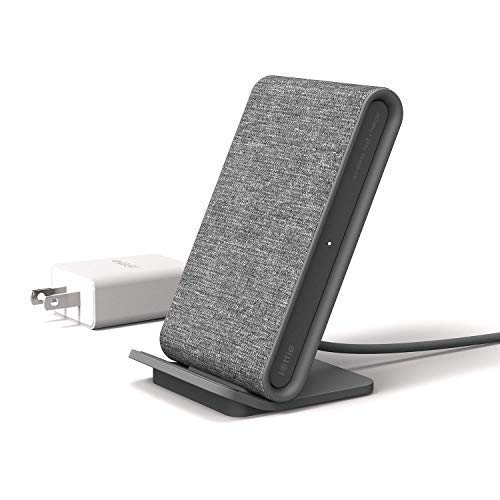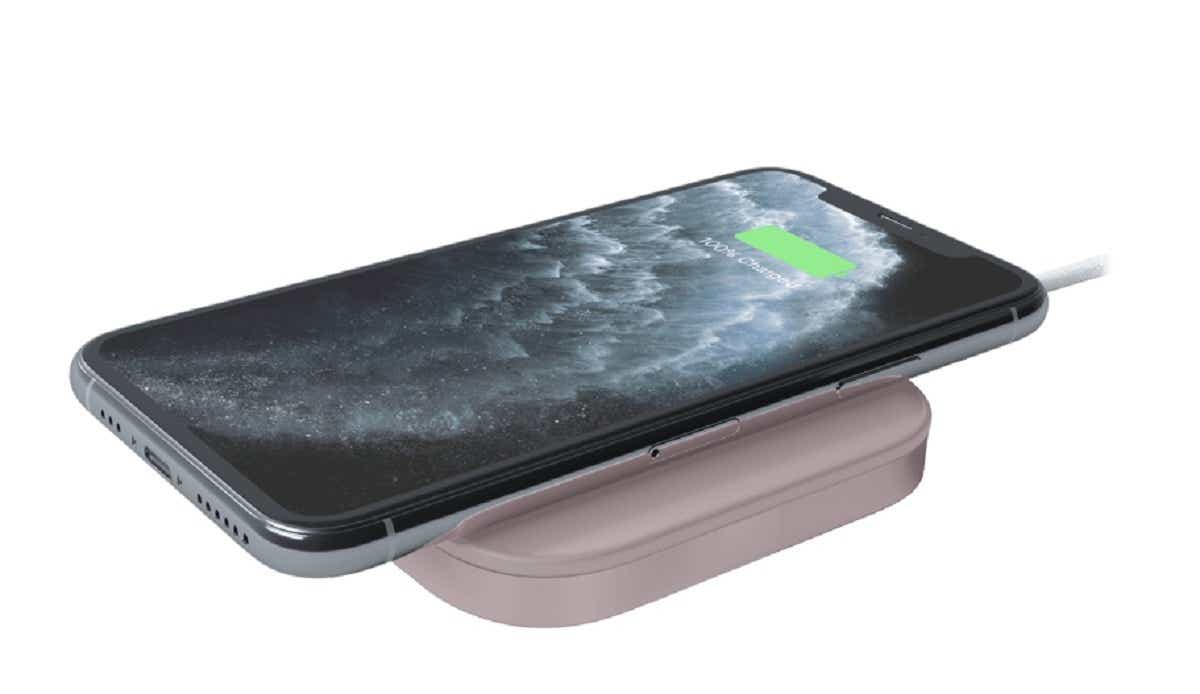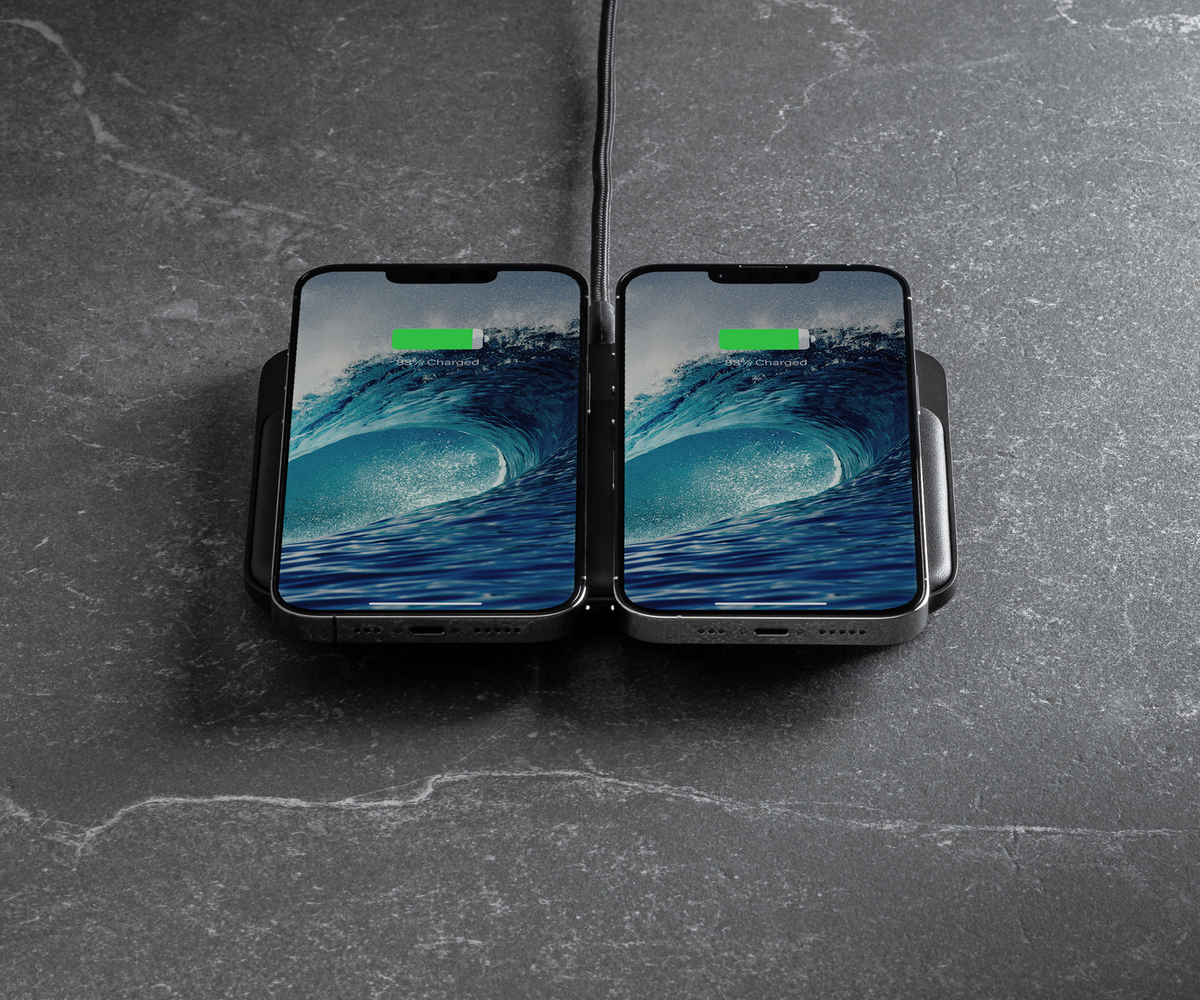Best wireless phone chargers 2023: Reviews and buying advice


As far as convenience goes, wireless charging can’t be beat. You simply place your phone onto the charging pad and walk away. Gone are the headaches due to lost or tangled cords and cable management.
Most major phone makers, including Samsung, LG, Sony, Motorola, Google, Huawei, as well as Apple have adopted wireless charging, and as the technology improves, we’ve seen the prices decrease. Nowadays, if your phone supports it, a wireless charging pad or stand can be a great solution for hassle-free recharging.
We’ve tested some of the most popular wireless chargers out there for both Android and iPhone, and picked our favorites from the bunch. Read on to see our recommendations, and check out our FAQ section at the bottom to help answer common questions about wireless charging.
Anker PowerWave 7.5 Stand – Best wireless charging stand overall

Pros
Fast charging Includes power adapter 7.5W and 10W support
Cons
Cooling fan is a little loud Price When Reviewed:$19.99Best Prices Today:$15.98 at Amazon$19.99 at Anker$31.02 at Walmart
Anker’s PowerWave 7.5 Stand is our current top pick. It charges faster on Android than any other pad we tested, looks nice, and has a stand that makes checking notifications very easy. A cooling fan in the base can be loud in a quiet environment, but it’s not a deal breaker—just something to keep in mind.
Read our full Anker PowerWave 7.5 Stand review
Nimble Stand – Best wireless charging stand for iPhones

Pros
Super-fast charging QC 3.0 wall adapter included Made from recycled materials
Cons
The ledge that a phone sits on can be finicky Price When Reviewed:$59.95Best Prices Today:$59.95 at Nimble
From its attractive fabric finish—made from hemp and recycled water bottles, no less—to its flexible form factor that lets you charge your phone upright or prone, to its reasonable price, we already liked the Nimble Stand. Then we saw its performance! It was the fastest at charging an iPhone of any of the wireless chargers we’ve reviewed, and laudable at charging Android as well.
Read our full Nimble Stand review
iON Wireless Stand – Best stand for iPhones runner-up

Pros
Fast charging for Android and iOS alike Well designed Works in landscape or portrait orientation
Cons
Pricey Price When Reviewed:$50Best Prices Today:$49.95 at iOttie
Like the Nimble Stand above, the iON Wireless Stand has the stylish looks you’d expect to see paired with an iPhone, it also works exceptionally well with that platform, achieving near-50 percent charge in 60 minutes on an iPhone.
Read our full iON Wireless Stand review
Logitech Powered Pad – Best single-device charging pad

Pros
Well designed Respectable charging speed
Cons
Doesn’t have a USB-C connector Price When Reviewed:$39.99Best Prices Today:$39.99 at Logitech
The Powered Pad features the quality looks and functionality you’d expect from Logitech. It also does a really good job charging Android phones, performing near the top of the pack.
Read our full Powered Pad review
Nomad Base Station Hub Edition with Magnetic Alignment – Best multi-device charging pad

Pros
Can charge up to four devices at once Magnetic coils help ensure proper alignment Well designed
Cons
It’s not an official MagSafe device, so charging speed is slower Price When Reviewed:$119Best Prices Today:$119 at Nomad Goods
Not only does Nomad’s charging pad offer a wireless charging surface that can accommodate two devices at once, it tosses in both a USB-C and USB-A port on its back side for wired charging of two additional devices, to boot. This is a great solution for cutting down on a charger clutter. While the Magnetic Alignment aspect of the charger devices remain stable on the pad, this is not an official MagSafe accessory.
Read our full Nomad Base Station Hub Edition with Magnetic Alignment review
iOttie iTap 2 Wireless – Best wireless charger/phone mount combo

Pros
Incredibly convenient Well designed Adds an extra USB port
Cons
Mounting plate required Not as fast as wired charging Price When Reviewed:$54.95Best Prices Today:54.95 at iOttie
The iOttie iTap 2 Wireless is a clever combination of phone mount and wireless charger.
In addition to the vent-style mount that we reviewed, it’s also available as a mount that uses the CD slot in your car’s stereo, or as a dash mount. All three are priced at $55 and are capable of wirelessly charging your Qi-enabled smartphone.
The included magnet in the iTap 2 Wireless was strong enough to hold an iPhone XS Max in place without fear of it falling while driving.
Read our full iOttie iTap 2 Wireless review
What to look for in a wireless charger
Until recently, there were two different wireless charging standards you had to be aware of when purchasing a wireless charging pad: the Power Matters Alliance (PMA) standard, and the Wireless Power Consortium’s (WPC) Qi standard.
PMA has since agreed to join the WPC and embrace the Qi standard. (We’ve noted in our individual wireless charger reviews if it supports the PMA standard, in case you have an older Android device that only supports PMA.) Now your only concern is whether it supports fast charging.
If you have a newer iPhone, you also have the option of MagSafe, Apple’s proprietary magnetic connecting system that’s built into the iPhone 12 and later.
As technology has evolved, so too has the speed at which a phone can wirelessly charge. You’ll need to know your own phone’s capability, typically expressed in terms of 7.5 watts (W), 9W, or even 15W. Make sure your charger takes advantage of that.
The packaging for most wireless chargers will indicate its speed. Look for the wattage speed on the box or in the specification listing for both your phone and wireless charger.
Do keep in mind that as fast as wireless chargers have become, the included charger for most phones will be your best bet when you’re in a hurry and need as fast a charge as possible.
How we tested
Android
In order to properly test and measure how long a wireless charger takes to charge a smartphone from 0 to 100 percent, we followed the steps below each time we placed a phone on the charging pad. For the initial round of tests, we used an unlocked Samsung Galaxy S9.
We enabled airplane mode on the Galaxy S9 to prevent notifications or connections from impacting battery life throughout each test.To completely drain the battery on the Galaxy S9, we looped a movie in VLC with screen brightness set to 100 percent until the phone powered off.If a wireless charger included its own power supply, we used it. If not, we used Samsung’s standard wall adapter and an appropriate cable.The phone was placed on a wireless charging pad, and a timer was set for four minutes (the minimum time required to bring the phone back to life across all the pads we tested). After four minutes, the phone was powered on and unlocked.A time-lapse video was recorded of each charging session using a Wyze Cam, with a photo captured every 60 seconds.Charge time was calculated by looking at the video and noting the time when the always-on-display of the Galaxy S9 would register 100%.We repeated the test three times for each wireless charger, then averaged the results.
iPhone
Testing a wireless charging pad with an iPhone requires a different procedure than with an Android handset. The iPhone doesn’t have an always-on display feature that constantly shows the current battery percentage. Because of this we opted to charge our iPhone X for a period of 60 minutes and measure the achieved charged level following the steps below:
We enabled airplane mode on the iPhone X in order to prevent any unnecessary notifications or connections from impacting battery life throughout the test.Using VLC and a display brightness set to 100%, we completely drained the battery until the iPhone X powered off.If a wireless charger included its own power supply, we used it. If not, we used Samsung’s standard wall adapter and appropriate cable.The phone was then placed on a wireless charging pad, and a timer was set for 7 minutes (the minimum time required to bring the phone back to life across all the pads we tested).At the 7 minute mark, the iPhone would be unlocked and then placed back on the charging pad. A new timer was set for 60 minutes.After the 60 minute timer expired, the phone was removed from the pad and the battery percentage was recorded.We repeated this process three times for each charging pad and averaged the results.
For an approximate ballpark of how long it’ll take to reach full charge with an iPhone, you can divide 60 (the number of minutes used for this test) by the percentage result listed in each review. So if the result is an average charge of 36 percent in 60 minutes, the soonest that a full charge will take is roughly 167 minutes, or 2 hours and 47 minutes.
Keep in mind that this is an imprecise estimate: We say “approximate” because it’s possible for charging to slow down during a full charge.
Find out the fastest ways to charge an iPhone.
FAQ
1.
Are wireless chargers worth it?
Since wireless chargers are much more expensive on average than just buying a new charging cable, you might wonder if they are really worth the investment.
We believe they are. They bring some unique advantages to the table over traditional wired charging. The first is a matter of convenience—wireless chargers don’t require you to plug in the phone nor do they have cables (at least cables that you frequently move around) that might get tangled or tied in knots. With wireless chargers you can just set your phone down or pick it up off the charger without worrying about the hassle of cords.
Wireless charging is also generally safer. Most wireless chargers come with smart charging technology that only uses power when your device actually needs to be charged. Once it’s fully charged, the charger turns off automatically. This saves energy and keeps your electronics from potentially overheating.
Finally, wireless charges keep you from having to replace your cables or devices after repeated wear and tear. Cables have a tendency to fray or break after an extended period of use. Since there is no need to plug your device into a wireless charger, this problem is a none issue.
2.
Is it safe to leave a phone on a wireless charger overnight?
Yes, most modern wireless chargers have smart charging technology that limits power output once a device is fully charged. When you place your phone on a wireless charger at night it will continue to charge until the battery is full and then the wireless charger will automatically power-off to save energy and protect the device from overheating. So you can rest assured that leaving your phone on a wireless charger overnight is perfectly fine.
3.
Which is better, wireless charging or wired?
Both wired and wireless charging are great options, so this is largely down to personal needs and preferences. Each has its own advantages and disadvantages.
The advantages of wired charging is that you get a more efficient and quicker charge and it is generally very cheap to buy new charging cables. The advantages of wireless charging, on the other hand, include a more durable and resilient charging option and wireless typically uses less energy—especially if you tend to leave your device attached to the charger for a long time.
With this in mind, if you are looking for something cheap and you can remember to plug and unplug your device from the charger, then the faster and more efficient option would be to go with a wired charger. However, if you don’t mind the expense and you want a smarter charger that potentially saves a little electricity and is easier on your battery then you should go with a wireless charger.
Author: Jason Cipriani, Contributor

Based in beautiful Colorado, Jason Cipriani is a freelance writer who contributes to, Greenbot, IGN, TechRadar, ZDNet and CNET.
Recent stories by Jason Cipriani:
Best portable power stations 2024: Top picks for preparednessBest power banks 2024: The top portable chargers for devicesLion Energy Eclipse review: A pricey but powerful battery pack







